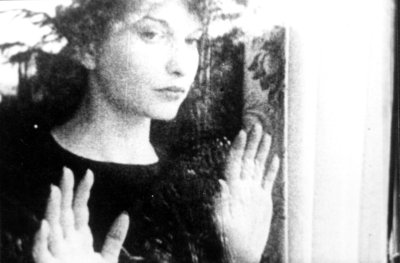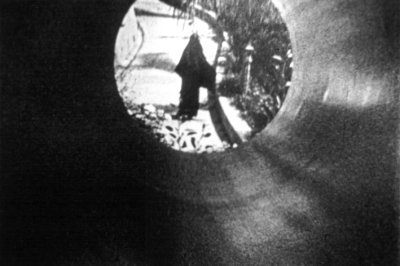

1943, USA, 16mm, b/w, sound by Teiji Ito added 1959, 13 min. 45 sec.
Meshes of the Afternoon is a strong dream-like mise-en-scène: on a large flower stands the silhouette of a figure briskly walking away; a house key, a bread knife, a telephone receiver resting off the hook are alternated in a sequence. A record turn on a phonograph. A woman (Maya Deren) walking along the sidewalk near her home catches a momentary glimpse of a figure turning the corner, unlatches the front door and, after a cursory inspection of the empty household, proceeds upstairs to rest on an armchair situated by a front-view window. From this unnerving introductory premise, Maya Deren modulates the mise-en-scene of seemingly mundane objects to create overlapping planes of existential reality, using permutations of recurring images - mirrored surfaces (the apparition’s face as a mirror, polished metal spheres), duality and doppelgangers - to represent shifty narrative fragments between imagination and memory. With an idiosyncratically dissociative filmic language, characteristic of nouvelle roman literature (and Alain Resnais’ subsequent feature films, particularly Last Year at Marienbad), the film posits a series of subtle structural, temporal, and logical mutations, creating a sublimely recursive, mind-bending meditation on the interaction between experience and memory, domestic banality and violence, imagination and causation.
Meshes of the Afternoon’s dream-like mise-en-scène, the illogical narrative trajectory, the fluid movement of the camera and the ambient soundtrack invite a type of contemplative, perhaps even transcendental, involvement for the spectator. The use of extreme and odd angles (as in the sequence of the character dreaming, a type of spider’s point of view, foreshadows the dreamer’s death) is a filmic characteristic which will influence the underground film-makers.
